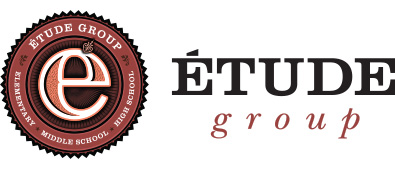 On Thursday April 9, we held our monthly session of Evenings at ESAA. The focus of this month was on Cultures of Thinking.
On Thursday April 9, we held our monthly session of Evenings at ESAA. The focus of this month was on Cultures of Thinking.
Families started off by engaging in the ‘3-2-1 Bridge’ Thinking Routine. This routine asks students to uncover their initial thoughts, ideas, questions and understandings about a topic and then to connect these to new thinking about the topic after they have received some instruction. (You may read more about 3-2-1 Bridge here, at Harvard Graduate School of Education.)
|
Your initial responses to the topic 3 Thoughts/Ideas 2 Questions 1 Analogy |
Your new responses to the topic 3 Thoughts/Ideas 2 Questions 1 Analogy |
|
*************Bridge************* Explain how your new responses connect to your initial responses |
|
The results of this thinking routine are listed here.
Initial questions included:
- Why is it called Culture of Thinking
- Why so many Thinking Routines?
- How do Multiple Intelligences fit in?
- How do we engage students to do critical thinking?
- How does Project-based Learning fit in?
- How do we teach basics (math, reading, etc.) through our Cultures of Thinking?
Initial thoughts included:
- Wonder
- Involvement
- Inclusion
- Multiple Intelligences
- Excitement for learning
Second round questions included:
- How is Cultures of Thinking evolving?
- Are there any parent friendly books or activities?
- How does this more creative deeper thinking fit with standards?
Second round thoughts included:
- Creativity
- Engagement
- Questions
- Collaboration
- Movement
- 21st Century skills
- Leading
- Experimenting
- Deeper thinking
- Take risks
Analogy: Culture of Thinking is to ESAA as coffee is to Paradigm
Can you imagine if our students were in an environment that did not foster critical thinking skills? What would happen if our students did not have the skills to observe, wonder, connect, reason, interpret or innovate? How would they be prepared for the future that does not yet exist?
In a video called, Shift Happens it stated that we are currently preparing students for jobs that don’t yet exist – using technologies that haven’t been invented – in order to solve problems we don’t even know are problems yet.
A member of the Étude Group Governing Board states it perfectly: “we don’t want our students to memorize the state capitals but solve problems at the state capital”.
The culmination of our philosophy is learning to use one’s mind well. At the core are creativity, critical thinking and innovation.
Susan Griffiths then explained how Culture of Thinking was imbedded throughout the 5th grade Gingerbread Structure project along with slides of the students creating throughout the entire process. This project was chosen as the main example because it involved varied math strands; a great deal of collaboration; and the students’ thinking is visible from beginning to end.
The evening concluded with clarifying questions from families and staff asking if their original questions were answered. The families then bridged their thinking by engaging in a second round of the 3-2-1 Bridge Thinking Routine (the results are listed above).
The next Evenings at ESAA will take place at the John Michael Kohler Art Center on April 23 at 6 p.m. Families will have the opportunity to experience being guided though Thinking Routines just as their children experience at ESAA.

